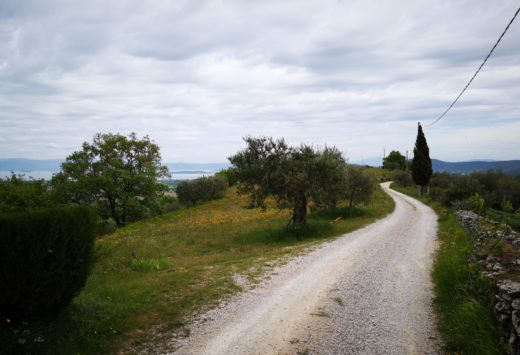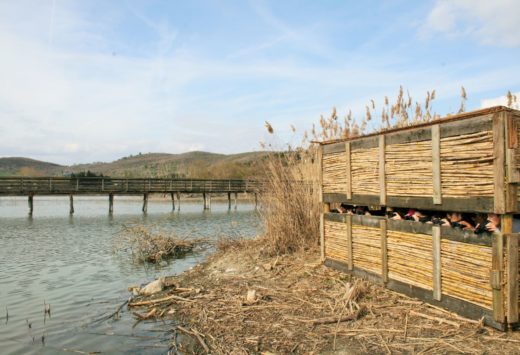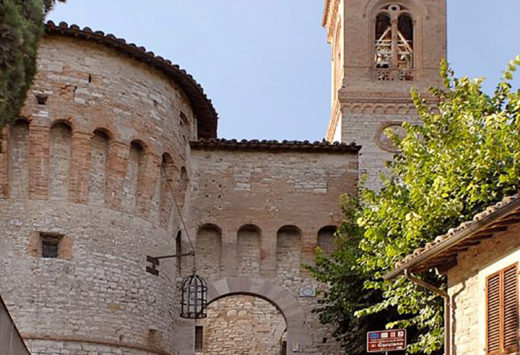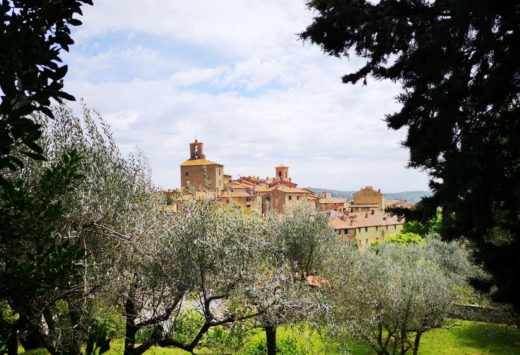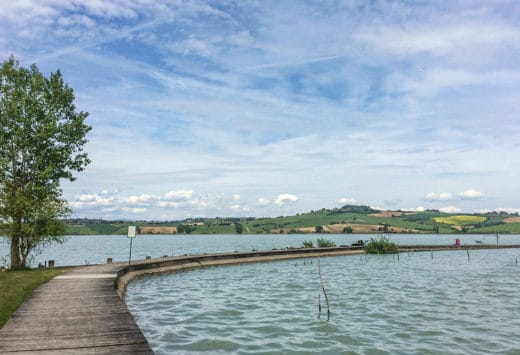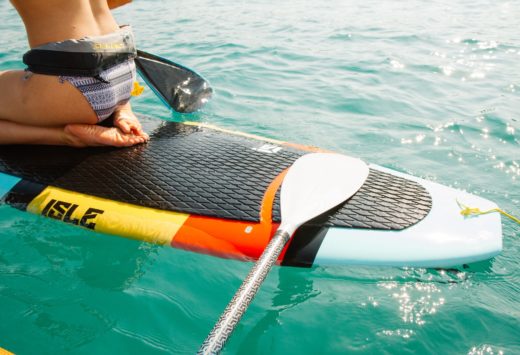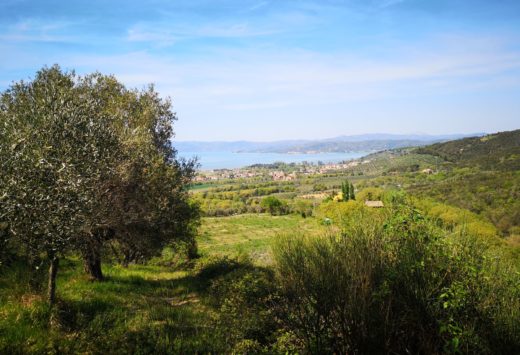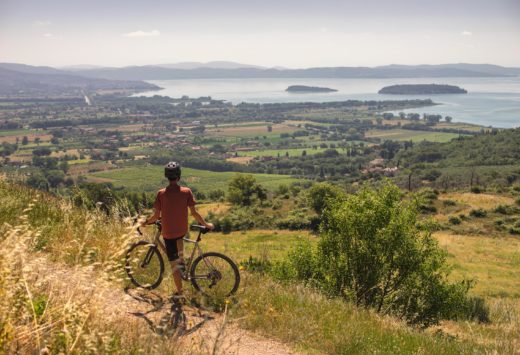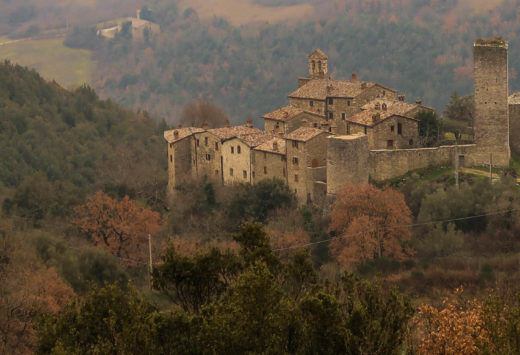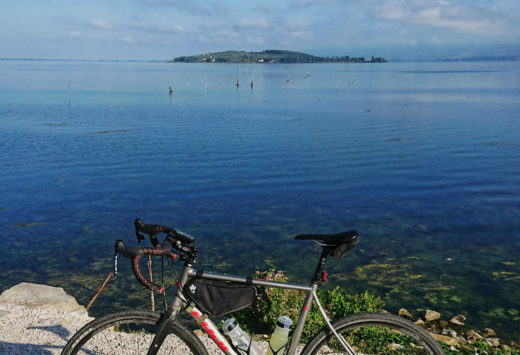Discover with us Tuoro sul Trasimeno
In the heart of central Italy, in the stunning region of Umbria, stands the lovely village of Tuoro sul Trasimeno.
As its name suggests, Tuoro overlooks the northern shores of magnificent Lake Trasimeno, the largest lake in central Italy. Here the blue waters smudge seamlessly into the surrounding verdant lands, extending in a soft and fluid continuum. This modest little village, nestled within the Parco Regionale del Lago Trasimeno (Regional Park of Lake Trasimeno), has less than 4000 inhabitants and together with visitors they enjoy a stunning lakeside landscape. Isola Maggiore, one of the Lake’s three islands, is also part of Tuoro where everyday life continues alongside a surviving ancient fishing village. Criss-crossed with walking trails and steeped in artworks and culture, enjoy the relaxed, laid-back atmosphere as you walk through the streets. The only lake Trasimeno island that is regularly inhabited, you can reach it by ferry from the beach at Tuoro and from the neighbouring towns of Castiglione del Lago and Passignano sul Trasimeno.
Tuoro’s origins can be dated to the period from 1200 to 1300, but the village has been well known since ancient times as the scene of the bloody and sudden Battle of Trasimeno, one of the most bloody and famous battles of the Second Punic War. It took place in 217 BC between the Carthaginian troops headed by the unscrupulous leader Hannibal and the Roman troops led by the consul Gaius Flaminius, who perished in the ambush along with most of his soldiers. Hannibal acted with cunning and ingenuity, enabling him to catch the adversary’s army unprepared; the Roman legions suffered a heavy defeat, with the loss of some 10,000 soldiers.
In memory of this battle, in the first half of June every year, Tuoro recalls the events of 217 BC and the inhabitants of the village re-enact the Battle of Trasimeno between Hannibal and Gaius Flaminius and their respective troops. As in the distant past, soldiers march in period armour and clothing and simulate training and re-enact moments of religious and working life in the village. The Roman Castrum (castle) of Tuoro also hosts educational exhibits suitable for everyone.
The geographical area of Tuoro consists of four districts: the Trasimena, Colonna, Malpasso and Valromana, whose symbols are composed of the combination of different colours, respectively yellow-blue, white-blue, white-red, and yellow-red. With the aim of promoting this territorial subdivision and reviving ancient traditions and important historical moments in the village’s daily life, every year an important event is organized called Ferragosto Torreggiano. It starts at the end of July and ends on 15th August (‘Ferragosto’ in Italian). The whole village takes part in the Lancio della sfida (Launch of the challenge), a theatrical challenge that kicks off the event. Processions follow during the Sfilata Storica (Historical Parade), followed by theatrical performances, games based on face-offs between the different districts and tastings of typical dishes that bring the distant past back to life during the Cena Storica (Historical Supper). The event, including a historical re-enactment of the 217 BC Battle of Trasimeno dedicates a day’s celebration to each district, (“Il Gran Giorno”), with on-going re-enactments, parades, games and festivities. It concludes with the Palio, and the most compelling and important race in the entire festival: the Tiro della Biga. In turn, a team from each district pulls a wagon at speed through the village streets, cheered on by its supporters, and the fastest team to complete the course wins the race. It gives one of the districts of Tuoro pride and prestige over the other three and determines the winner of the victory amphora.
Another important occasion for the inhabitants of Tuoro and for all its visitors is the Infiorata flower festival, which takes place annually in June on the occasion of the Corpus Domini Procession. Wonderful flowers are cut from Tuoro’s rolling hills or donated by the garden centres in the area. The medieval alleyways are filled with colours, and the scents of the variegated multitude of flowers meander throughout the village. The inhabitants work together to create beautiful floral displays, entire carpets of petals that illustrate and blend tradition, religious faith and history.
Another unmissable event that runs during the Christmas holidays and up to the Epiphany is Tuoro in Favola, filling Tuoro’s streets and squares with music, theatre, exhibitions and events for adults and children alike. Yet another celebration aimed at promoting music, theatre and culture is the Piccolo Festival del Rondò, a celebration of classical music and theatre located right in the historic centre, in the pretty Piazzetta del Rondò. On a lovely terrace overlooking Lake Trasimeno, virtuoso masters and artists perform wonderful sonatas and live concerts.
There are also numerous food and wine events and tastings of typical local products.
Among these is Campo del Sole Campo diVino in July, held in Campo del Sole, the magical open-air museum located on the shores of Lake Trasimeno. Participants get the chance to taste delicious dishes prepared with premium local produce accompanied by tastings of premium-level local wines and other specialities produced by wineries in the Trasimeno area. At the beginning of autumn, another food and wine event is organized by Tuoro sul Trasimeno, the Festa dell’olio e dei sapori d’autunno (Oil and Autumnal Flavours Festival), featuring Umbria’s excellent oils and other typical local products of the upcoming season that are served during tastings. The dishes prepared are masterly exaltations of gastronomy. There are guided tastings of oil and workshops also suitable for children as well as exhibitions of local handicrafts and musical and cultural entertainment.
The production of extra virgin olive oil is extremely important for Tuoro sul Trasimeno not just as a food but also from a cultural and social standpoint. It is one of the products that underpins Umbrian traditions, as does wine, which is produced from the ‘Colli del Trasimeno’ vineyards.
To help promote this local product, every year Tuoro sul Trasimeno organizes a photography competition called L’Oro d’Oliva. The central subject is extra virgin olive oil in all its forms, from the trees from which it is extracted to the production cycles and the delicious flavour and authenticity of the finished product.
Craft activities that are typical of the economic life of Tuoro sul Trasimeno include lace embroidery and the production of beautiful, prestigious artefacts.


